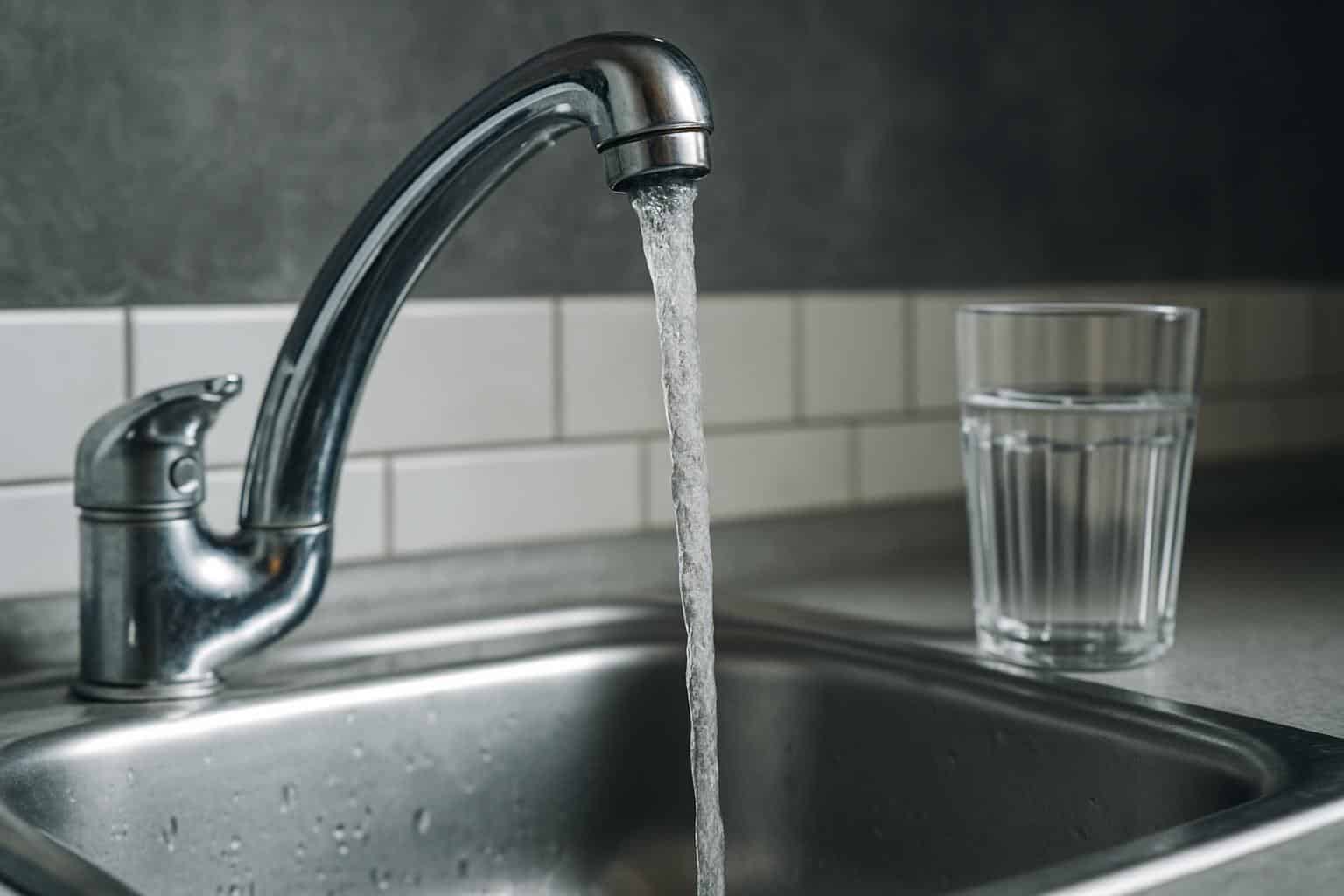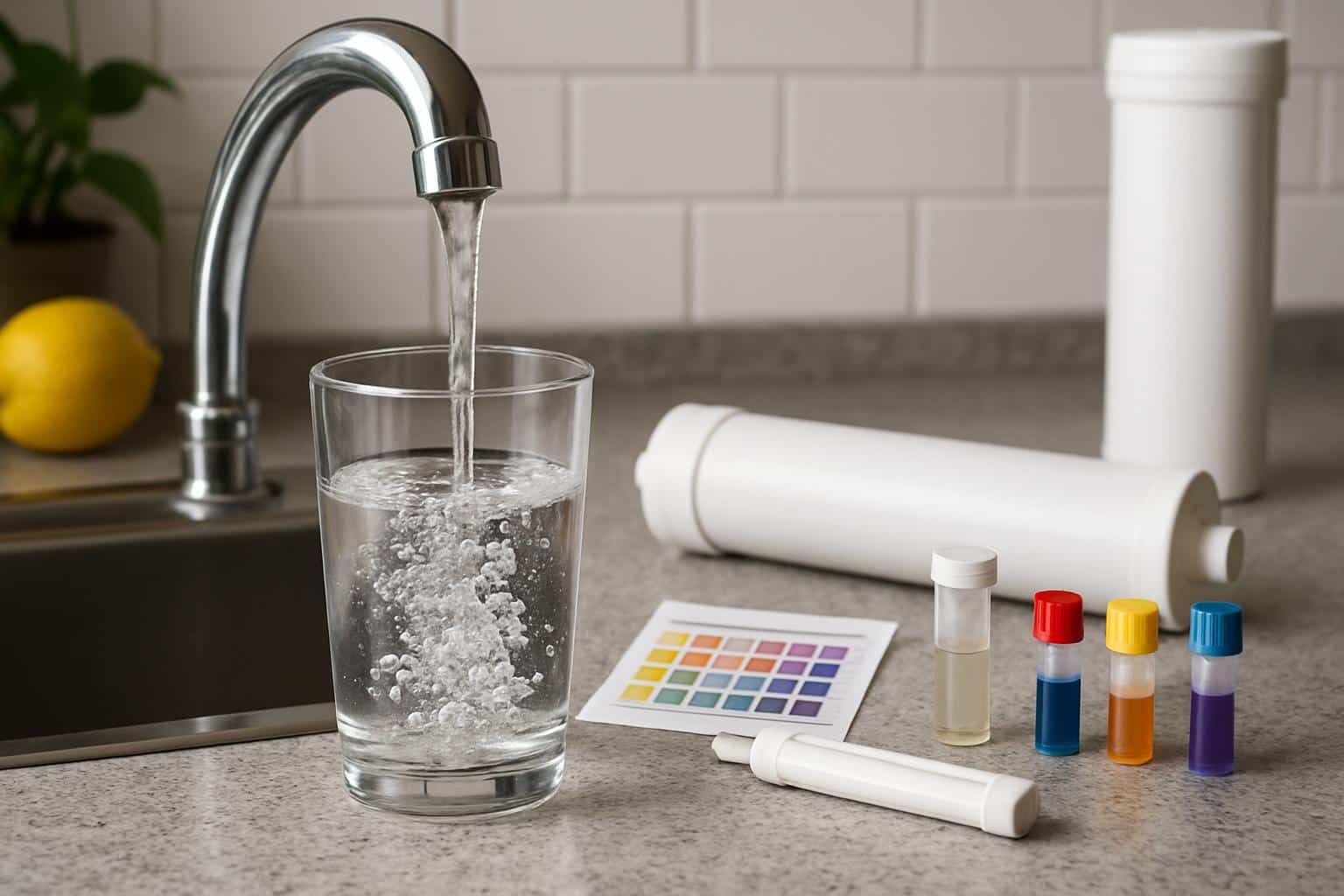If your water tastes funky, stains dishes or has you thinking twice about what might be between the tap and your lips, don’t worry — it’s not just in your head. Fifty percent of the 2023 U.S. Geological Survey sampling of drinking water systems across the United States detected at least one PFAS compound, and thousands of systems record Safe Drinking Water Act violations each year, according to federal compliance data. The good news: You can easily get a grounded picture of what’s in your water — and select fixes that actually work.
Why Testing Your Drinking Water Matters Today
Water problems rarely look dramatic. Lead is invisible. PFAS is tasteless. Nitrate and arsenic are colorless. Even so-called “hard” water — that which is rich in calcium and magnesium — generally presents itself as nothing more than some soap scum, possibly a bit of scale. But the stakes for health differ dramatically: Lead poses special hazards to children; nitrates can be risky for infants, and some PFAS are associated with immune and cancer risks. What follows is every sensible decision made possible by knowing the actual contaminants, as opposed to guessing.
- Why Testing Your Drinking Water Matters Today
- First Steps: Identify Your Water Source and Risks
- How to Test Your Drinking Water the Proper Way
- Interpreting Your Results and Water Standards
- Pick a Targeted Treatment, Not Just Gadgets
- Point-of-Use vs. Whole-House Systems: What to Know
- Stay Safe Going Forward with Smart Water Habits

First Steps: Identify Your Water Source and Risks
Begin by checking whether you’re on a public system or get your water from a private well. If you’re on municipal water, grab your Consumer Confidence Report that you should get from the utility yearly; utilities are mandated by the Environmental Protection Agency to issue these reports with testing results and any violations. But they won’t pick up on household plumbing problems like lead leaching from old fixtures, so you may still want home testing.
If you have a private well — around 43 million Americans do, according to USGS — it’s up to you. The Centers for Disease Control and Prevention advises testing annually for coliform bacteria, nitrates, total dissolved solids, and pH; certain other tests would be indicated if flooding occurred; there was a change in taste, color, or odor; construction taking place; or manure runoff occurred. Your county health department or state laboratory certification program can refer you to accredited labs and regional contaminants like arsenic or manganese.
How to Test Your Drinking Water the Proper Way
Get oriented with rapid screens, then confirm it in a certified lab. Test strip results and handheld meters can estimate hardness, chlorine, pH, and total dissolved solids; they’re helpful for a first pass but are not definitive when it comes to the health risk. Mail-in lab kits or local certified labs provide defensible results for metals, PFAS, arsenic, nitrates, volatile organics, and microbes.
For lead, take a “first-draw” sample after water has remained in pipes at least six hours; that’s when leaching shows worst-case exposure. For microbial safety, labs tend to offer sterilized bottles with strict handling guidelines. If you have reason to suspect only one problem, like a sulfur odor, targeted testing is dandy. For peace of mind, testing a full panel once and maintaining periodic targeted testing could be pragmatic.
Interpreting Your Results and Water Standards
Results are typically given in parts per million (ppm), billion (ppb), or trillion (ppt). Compare those to EPA Maximum Contaminant Levels for regulated substances (e.g., arsenic at 10 ppb, and nitrate as nitrogen at 10 ppm). In 2024, the EPA issued national drinking water standards for PFAS, making them enforceable and setting very low limits on several of the compounds, including PFOA and PFOS, while adding protections for others; in the next few years, many utilities will be upgrading their treatment.

Action levels and health advisories are not the same as enforceable limits; when in doubt, ask your local health department or an American Water Works Association member utility to help interpret the results. If there are babies, pregnant people, or immunocompromised individuals in your household, you may want to set internal targets for thresholds that are more stringent than the legal minimums.
Pick a Targeted Treatment, Not Just Gadgets
Match technology to the contaminants and seek validation. NSF/ANSI certifications serve as your shorthand — 42 for taste and odor; 53 for lead and many, many chemicals; 58 for that reverse osmosis label; 55 for some UV disinfection (for heaven’s sake); 44 in the case of softeners; and a very recent one, NSF/ANSI certification 401, addressing “emerging” contaminants. And if a device fails to advertise relevant certifications, then maybe you should be skeptical about its performance claims.
- Hardness or acidity: Softeners (ion exchange) and pH neutralizers will protect plumbing and appliances, but do not remove harmful chemicals.
- Lead and numerous organic compounds: When properly maintained, activated carbon filters that are certified to NSF/ANSI 53 can help significantly reduce lead, disinfection byproducts, and pesticides.
- PFAS, nitrate, arsenic, total dissolved solids: Reverse osmosis or certain ion-exchange resins are most effective; some systems combine carbon plus RO for broader coverage.
- Bacteria and viruses: UV disinfection in tandem with well-maintained chlorination takes care of them; sediment prefilters see to it that the UV can function.
Rough budgets: $150 to $400 for a certified lab panel; $200 to $600 or more for a quality under-sink RO unit and another $50 to $150 per year in new filters; $800 to $2,000 for a softener; and from about 1,500 bucks up for a whole-house carbon system. Pros can also assist you in sizing a system based on flow and household usage.
Point-of-Use vs. Whole-House Systems: What to Know
Point-of-use systems are dedicated to what you drink and cook with — usually under-sink filters that connect to a separate drinking water faucet. They’re cost-effective for chemical contaminants. Point-of-entry systems treat all of the water entering the home, safeguarding showers, washing machines, and appliances. That is important for things like chloramines, odors, and gases, for example, radon or volatile organics that you may inhale in the shower. In practice, what most homes get is a veritable hybrid: whole-house carbon for comprehensive reduction followed by under-sink RO for drinking water.
Stay Safe Going Forward with Smart Water Habits
Change filters as recommended; they can become ineffective when media is clogged, or create bacteria. Retest yearly if you have a well, after plumbing changes, or if taste, odor, or color changes. And if your utility does issue a boil-water advisory, keep in mind that boiling kills off microbes, but not lead (you may only find out you have it after the fact), or other contaminants like nitrates, or PFAS — and will do nothing to remove them and can concentrate them. For lead, only cook or drink with cold water, flush taps if they sit idle, and set to replace lead service lines and old fixtures.
Bottom line: You should begin with facts, not fear. Know where you are sourcing it from, test with a certified lab, and capitalize on products that work and are proven to work for your individual results. With a lean plan — and the right credentials behind it — you can turn this fraught question into a clear, quantifiable answer.

